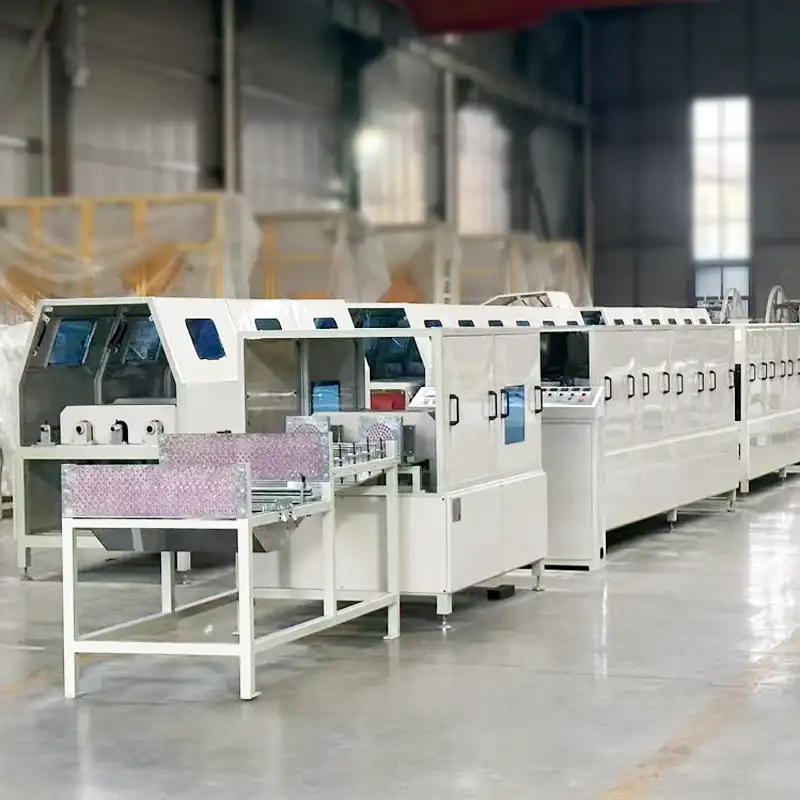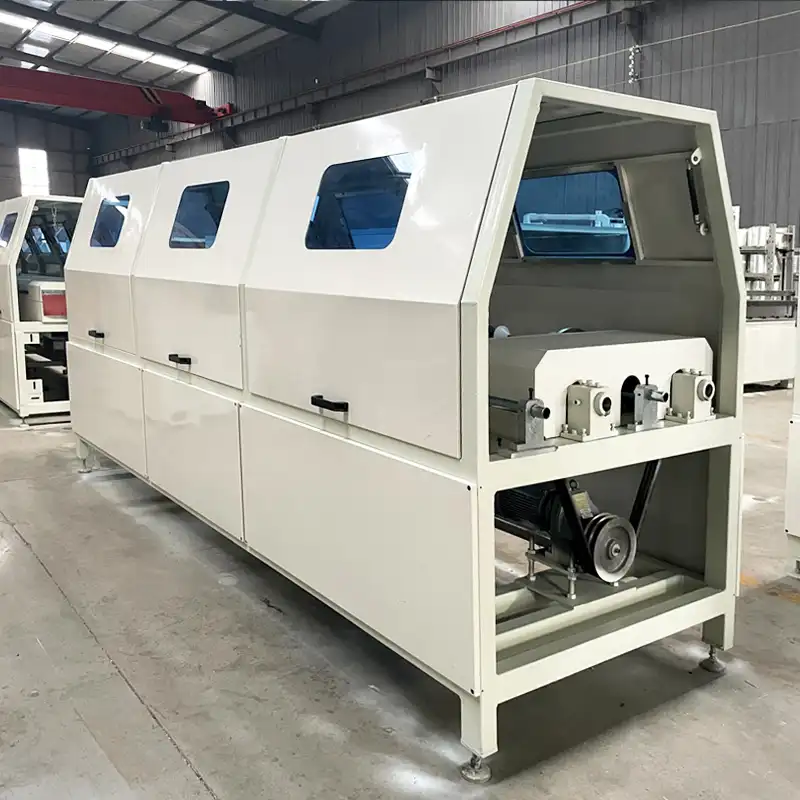
What Factors Influence the Initial Investment in an FRP/GRP Rebar Machine?
Buying machinery for FRP or GRP rebar involves several expense parts. These include the setup of the unit itself and changes to the building where it will work. Grasping these things ensures correct money planning and the best arrangement for making profits over the long run.
Key Components That Affect Machine Pricing
The price tag for getting a machine to make FRP or GRP rebar depends heavily on its setup and what it can make. The unit usually has a yarn holder, a resin bath, a wrapping part, a heating chamber, a pulling setup, a cutting tool, and a stacking frame. This equipment is mainly used to create different sizes of fiber-reinforced plastic rebars. It can do many steps by itself. These steps include separating yarn strands, soaking them, giving them an early shape, winding fibers, heating to harden them, pulling them along, cutting to set lengths, and gathering and stacking the finished items. Each part adds to how complicated the equipment is and its final cost. For instance, units with four or five production lanes able to make several thicknesses at once will cost more than simpler two-lane systems.
Installation and Setup Costs to Consider
Beyond buying the equipment, putting it in involves base work, electrical hookups (usually 380V/50Hz), airflow systems for heating chambers, and safe space planning. Depending on how ready the factory is and what local worker fees are like, setting up might add 10% to 20% to the first big spending.
Required Infrastructure and Facility Adjustments
Machines for making FRP or GRP rebar need enough room on the floor (up to 26 meters long) and climate control for handling sticky liquids. The heating box uses a divided build…and the inside is packed with warmth-keeping materials. This means proper air movement systems are necessary. They handle fumes and keep steady hardening conditions.
Key understanding from Aoliande: Buyers often miss building needs like spaces for storing sticky liquids or areas with steady warmth. These are vital for keeping things running without stopping.
What Are the Revenue Opportunities from FRP/GRP Rebar Production?
The rising need for rust-proof building supports in construction, sea projects, and big public works offers large profit possibilities. Making special items and serving unique uses further boosts earnings.
Market Demand for FRP/GRP Reinforcement Materials
Fiber-reinforced plastic rebar has gained interest because it doesn’t rust and lasts long. This new building material makes concrete constructions stronger. It provides excellent toughness and endurance. With more demand in seaside public works, chemical factories, parking buildings, and bridge tops facing salt from de-icing, GFRP rebar shows a profitable market chance.
Applications Across Construction, Marine, and Infrastructure Projects
GFRP rebar gives the most convincing payback in: Sea and coastal structures; Bridge tops…Parking buildings…Chemical plants…MRI rooms… These special areas need things that regular steel cannot provide. This is due to rust worries or magnetic issues.
Potential for Customization and Value-Added Products
Some equipment models allow special changes like adjustable wrapping angles or making several thicknesses together. It can produce four GFRP rebars at the same time. This adaptability opens doors to special markets. These include building sites needing no magnetic fields or light pre-made panels.
Key understanding from Aoliande: Many producers miss out on high-earning areas like custom lengths or coatings. This happens because their equipment lacks flexibility.
How Do Operating Costs Impact Long-Term ROI?
While making FRP or GRP rebar brings high returns, how efficiently it runs matters greatly. Power use, worker needs, and upkeep all play key parts in deciding profits over time.
Energy Consumption and Efficiency Metrics
Heating chambers use lots of power. However, newer designs use smart controllers for good heat management. It is warmed by heaters and managed by a clever heat controller. Power use changes based on the heating type (electric vs. water). It usually falls between 9 and 18 kW per unit.
Labor Requirements and Automation Capabilities
Higher self-operation levels cut down on needing many workers. The unit can handle yarn splitting…cutting and stacking by itself. This reduces human mistakes. It also ensures steady output quality. This is vital for meeting building-grade rules.
Maintenance, Repairs, and Spare Parts Availability
Care tasks include cleaning resin drops from heating chambers or changing cutting blades. Equipment with easy-to-change parts makes upkeep simpler. The heating box uses a divided build…to clean up dripping resin.
Key understanding from Aoliande: Buyers often forget about getting spare parts easily. Working with sellers who have nearby help centers greatly lowers costs when things stop working.
What Financial Metrics Should Be Used to Evaluate ROI?
Checking the return on spending requires an organized method. This includes the payback time, NPV, IRR, and money flow guesses. These ensure the spending fits money goals.
Payback Period and Break-Even Analysis
Given typical market costs of $2.13 to $8.20 per meter for GFRP rebar versus making costs near $0.152/meter for 10mm bars, the time to earn back the spending can be as quick as twelve months. This depends on how much is sold.
Net Present Value (NPV) and Internal Rate of Return (IRR)
These tools account for future money coming in, adjusted over time. NPV helps see if expected profits beat the first spending. IRR shows how appealing the project is compared to other ways to use money.
Cash Flow Forecasting Over a 5–10 Year Horizon
Guesses should think about changes in raw stuff costs (resin/glass fiber), upkeep cycles, worker pay increases, power rates—and possible higher prices from top-performance uses.
Key understanding from Aoliande: Many buyers ignore long-term money flow planning. This leads to guessing too low the money needed for daily work when growing bigger.
How Does Production Capacity Affect Profitability?
What a machine can make directly changes cost savings from large-scale output. Matching what can be made with what buyers want is key to getting the most efficiency and income.
Output Capabilities of Different Machine Models
Depending on the model type—two-lane versus five-lane—the amount made per work time varies a lot. Machines with more lanes increase cost savings from bigger scale. But they also need larger orders to stay profitable.
Scalability for Medium to Large-Scale Manufacturing
Systems with changeable parts allow step-by-step growth without stopping current work. This is a big plus when entering new markets bit by bit without spending too much money too soon.
Downtime Minimization and Production Continuity
Features like motors with changeable speeds or automatic tracking saws cut down on stops. The GFRP rebars…can be cut to length while moving…
Key understanding from Aoliande: Customers often focus on making speed. But they forget that reliability directly changes how steady monthly earnings are.
Why Is Supplier Selection Critical for ROI Optimization?
Picking the right equipment seller affects not just first costs but also long-term running success. This happens through technical help, guarantees, and update choices.
Technical Support and Training Services Offered
Sellers should give full learning packages. These cover running the machine, safety steps, and fixing problems. This is especially key when entering new material areas like composites.
After-Sales Service and Warranty Policies
Guarantee coverage on fluid power systems or heat controllers can stop surprise costs during early running times. The fluid power station uses parts from a China-Japan partnership…it lasts long and is sturdy.
Availability of Upgrades and Future-Proofing Options
Sellers who offer changeable improvements—like switching from manual holding to fluid power—lengthen the equipment’s life without full replacement.
Key understanding from Aoliande: Choosing a seller based only on price misses key profit factors. These include quick help during breakdowns or support for fine-tuning after setup.
How Can Risk Be Mitigated When Investing in FRP/GRP Rebar Machinery?
Lowering spending dangers involves possibility studies, flexible growth plans, and teaming up with skilled sellers. This ensures smooth market entry.
Conducting Feasibility Studies Before Purchase
Possibility checks help grasp the product-market match locally. This is especially key where steel stays strong due to familiarity or rules.
Choosing Modular Systems for Flexible Expansion
Machines offering swap-able molds or scalable production lanes allow step-by-step growth. This matches shifts in what buyers want instead of too much spending at the start.
Partnering with Reliable Distributors or Consultants
Local partners help with rule navigation (like approvals), delivery planning, raw stuff finding—all crucial when entering export-driven areas like sea public works.
Key understanding from Aoliande: Missing local partners often delays start times by months. This hurts early money flow badly.
Who Is Hebei Aoliande Chemical Equipment Co., LTD.?

As a top maker of FRP/GRP rebar machines, Hebei Aoliande joins modern tech with full support. This helps firms get the best return on spending across different uses.
Company Overview and Industry Experience
Hebei Aoliande focuses on composite material machine answers. These include pultrusion lines, molded grating equipment, profile machines—and notably—their modern FRP/GRP rebar machines made for large factory use. We provide a full set of FRP grating machines along with making know-how if needed.
Product Range and Technological Capabilities
Their offerings cover self-acting fluid power setups with PLC control units across pultrusion systems. These can make I-beams, rods & solar panel frames. The fluid power FRP pultrusion line is managed by PLC…joining fluid power pull-push action…
Global Reach and Customer Satisfaction Track Record
With setups across Asia-Pacific areas backed by many-language tech teams—they make sure buyers get complete service. This runs from starting up through lifelong upkeep.
Key understanding from Aoliande: Many rivals lack vertical joining—from mold design to final putting together. This limits custom options key for top profit in special areas.
What Are Common Challenges in Achieving Expected ROI?
Changing material costs, rule hurdles, and competition from regular steel rebar can affect earnings. This needs active plans to beat.
Fluctuations in Raw Material Prices
Sticky liquids like epoxy or polyester come from oil; their price changes directly hit earnings unless covered by contracts or big buys. Material Cost Comparison…making cost…about $0.152 per meter…
Regulatory Compliance and Certification Requirements
Markets like North America need ASTM approval while EU requires CE marking—missing these can block entry even with product pluses like rust resistance. GFRP rebar has a smaller carbon footprint than steel over its whole life…
Competition from Alternative Reinforcement Technologies
Steel stays strong due to old rules; yet rising knowledge about lifetime cost savings from GFRP creates space for smart placing. This means competing on performance, not just price.
Key understanding from Aoliande: Buyers who fail to match product specs with approval paths often face shipping delays. This hurts profit timelines sharply even after being ready to make.
Conclusion
Putting money into an FRP/GRP rebar machine needs more than just cash—it calls for smart planning across building readiness, seller choice, running efficiency measures, risk lowering plans—and above all—a clear grasp of your target market’s rule scene. Hebei Aoliande Chemical Equipment Co., LTD offers not only sturdy machines but also joined-up support services. These help firms unlock the highest return on spending across different use areas—from sea works to top-level public building projects.
FAQs About FRP/GRP Rebar Machine ROI
What’s the average payback period?
Usually between 12–24 months depending on sales amount & product types.
Can one machine produce different diameters?
Yes; models handle DN4–40mm based on setup.
Is technical training included?
Top sellers like Aoliande give full learning & after-sale support.
What industries benefit most?
Seaside public works & chemical plants see highest payback.
Are these machines scalable?
Yes; changeable improvements allow step-by-step growth without full new spending.





